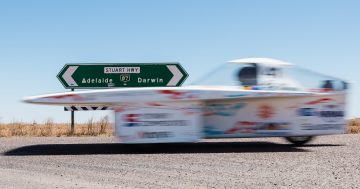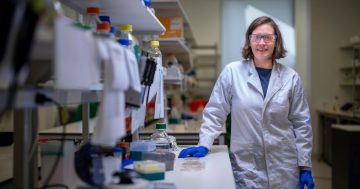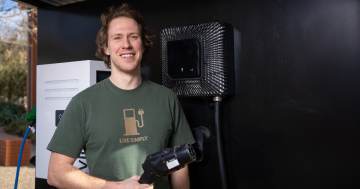
A shortage of critical minerals could hamper the growth of EVs. Photo: James Coleman.
A computer chip shortage might plague the global car industry at the moment but another shortage is looming, one that could seriously hamper the rise of electric vehicles.
Fossil fuels might be finite, but so are the metals that go into EV batteries. As demand increases and the world scrambles for solutions, the Australian National University (ANU) is calling for the next generation to consider a degree in Earth science.
Four speakers from prominent educational institutions across the country will come to Canberra for a public symposium on 5 May to discuss the role of critical minerals in the transition to low-carbon energy.
Mark Hoggard is a research fellow for the Research School of Earth Science at the ANU and says the free event is motivated by the “worrying” closure of several prominent Earth science institutions around the country when we need all the brainpower we can get.
“Over the next 20 to 25 years, we are forecast to need as much copper as we have ever used in human history to date,” he says.
“Some of that can be achieved through recycling existing copper, but you can’t recycle everything you’ve ever made in human history to meet the demand. That means we are still going to be needing to get copper out of the ground.”
Lithium, cobalt and nickel are also on borrowed time.
“Nickel is one of the ones that is expected to have the highest shortfall, in terms of what we know we have versus what we think we’re going to need.”
Likewise, cobalt has turned out to be almost essential in batteries, but at least two-thirds of the world’s supply comes out of mines in southern Congo in Africa.
“The mining conditions there are not great,” Mark says.
“It’s not where you’d ideally want to be sourcing cobalt, so there’s a big push to find an alternative source of cobalt that is more socially and ecologically responsible.”

Mark Hoggard, Research Fellow at the ANU Research School of Earth Science. Photo: ANU.
Mark’s work covers a broad area of earth science called geodynamics, or as he puts it, “how the Earth works and why”. He says Australia is relatively blessed to have a plentiful supply of ore-rich rocks close to the surface, but it’s time to start digging deeper.
“Working out how to find new deposits means pushing the hunt for deposits deeper than the surface. But to do that, we want to minimise any environmental and social impacts, and in Australia, that means finding large and high-grade deposits so you only have to dig one hole.”
Mark says that all of these minerals can be recycled once mined, but the key is having enough of them to make them “economically viable”.
“For example, copper is in a lot of wiring and piping, so when you replace a building’s stock, you need to separate your wiring and pipework from the general rubble. It can all be done relatively efficiently, but it does require effort at all levels.”
In the case of cobalt, Mark says companies and academics are doubling down on finding a battery technology that doesn’t rely on the dirty metal.
“It’s proven quite hard to replace cobalt, but there has been some success with nickel-based solutions. But what this does is push your demand onto finding nickel. There are only so many technological solutions you can find before you have to go with one of them.”
Mark says the world is relying on the next generation of earth scientists to come through school, understanding how important these issues are.
“If we’re going to solve them, we need a well educated and capable workforce,” he says.
“Judging a department purely by the number of undergraduates doesn’t actually tell you about how valuable the research is to the wider Australian society.”
‘The role of Earth Science in 21st century Australia’ will be held on Thursday, 5 May at 5:30 pm in the China in the World Theatre on Fellows Lane, ANU. Register online for free.





















